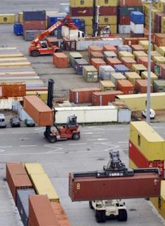Container throughput at the Port of Le Havre increased 5 percent during 2010 to 2.4 million 20-foot equivalent units, compared to slightly more than 2.2 million TEUs in 2009, when container traffic declined about 12 percent.
The container trade was one of the bright spots in the French port’s overall performance last year as its throughput in tonnage terms declined about 5 percent to 70 million metric tons. The Le Havre Port Authority attributed the tonnage decline to a lower volume of crude oil deliveries during the recession year.
The Atlantic port’s performance was hampered in part by sporadic labor actions, fueled by the ongoing implementation of France’s port reform legislation, which calls for the privatization of terminals.
Le Havre maintained its position as the largest French container port, with a market share of around two thirds of the country’s total container trade.
The port authority said the growth in container volume last year was due in part to new Asia-Europe services that called there, including the joint service between Maersk Line and CMA CGM (which the carriers call respectively AE8 and FAL5), new direct services from Vietnam by Hanjin Shipping and CMA CGM, and the New World Alliance’s new CEX service.
The New World Alliance’s new trans-Atlantic APX service, which was launched toward the end of 2009, and its CEX service also contributed to the rebound in Le Havre’s container traffic last year.
The port authority said it expects the growth in container throughput to continue in the year ahead, thanks in part to the growth in the reefer trade with Brazil and of the wine trade with the U.S. Le Havre handled 620 million bottles of wine and spirits during 2010, including 2 million bottles of Beaujolais exports to the U.S.
The Journal of Commerce Online













